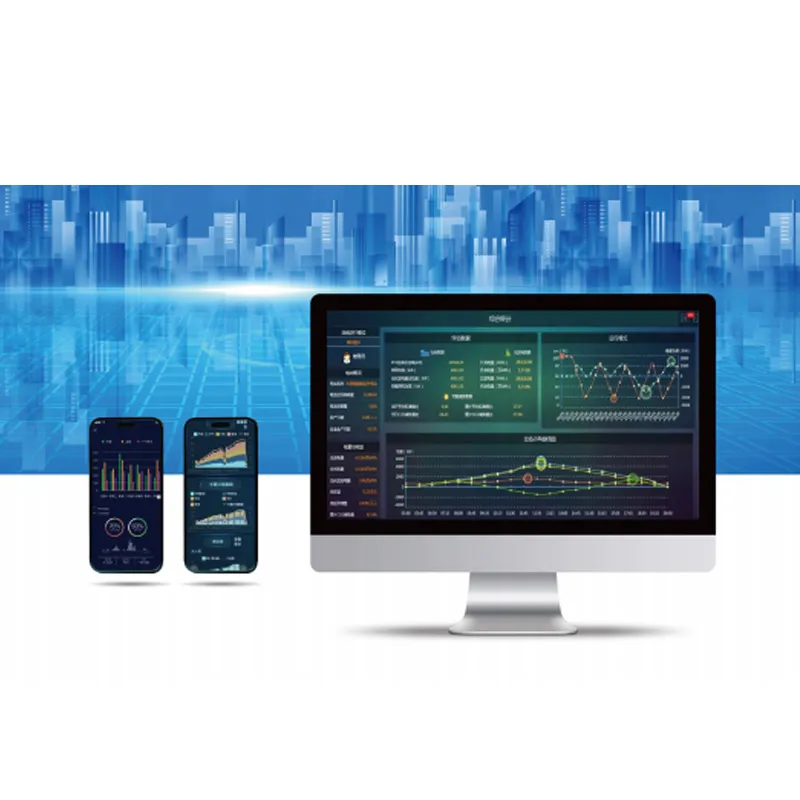
Lug . 03, 2025 14:01 Torna alla lista
Energy Control Systems in Public Transportation Networks
In an era where sustainability and operational efficiency are paramount, public transportation networks face the dual challenge of reducing carbon footprints while maintaining reliable service. At the heart of addressing these challenges lie energy control systems, which serve as the backbone for optimizing power usage, integrating renewable energy, and ensuring seamless operations. This article explores how advanced solutions in this domain—specifically focusing on energy management system frameworks, battery storage innovations, and holistic control mechanisms—are transforming modern transit networks.

The Core Role of Energy Management System in Transit Optimization
A energy management system (EMS) acts as the central nervous system of a public transportation network, coordinating energy flow across vehicles, infrastructure, and power grids. By collecting real-time data on energy consumption, vehicle performance, and grid conditions, these systems enable transit operators to make data-driven decisions that cut costs and minimize waste. For example, EMS can adjust power distribution during peak hours to prevent overloads, prioritize energy use for critical systems like traction motors, and integrate regenerative braking technologies to recapture energy that would otherwise be lost during stops.
Modern EMS platforms also support predictive maintenance by analyzing energy usage patterns to identify inefficiencies in vehicle components. This proactive approach not only extends the lifespan of equipment but also ensures that energy is used only where and when it's needed. By centralizing control over disparate energy assets—from electric buses to station lighting—transit agencies gain a unified view of their energy landscape, fostering accountability and enabling strategic planning for long-term sustainability goals.
Enhancing Resilience with Energy Management System Battery Storage Solutions
One of the most transformative advancements in public transportation energy systems is the integration of energy management system battery storage. These systems address the intermittent nature of renewable energy sources (such as solar or wind) that power many transit networks, providing a stable energy buffer during periods of high demand or low generation. Battery storage units can store excess energy produced during off-peak hours and release it when demand surges, reducing reliance on costly grid electricity and minimizing operational disruptions.
In electric bus fleets, for instance, battery storage integrated with an EMS can optimize charging schedules to take advantage of lower-cost nighttime electricity rates while ensuring vehicles have sufficient power for daily routes. Additionally, these systems enhance grid stability by acting as distributed energy resources, feeding stored energy back into the grid during peak periods—a practice that can even generate revenue for transit agencies through demand response programs. The combination of intelligent energy management and robust battery storage creates a resilient ecosystem that balances supply and demand, reduces greenhouse gas emissions, and future-proofs transit networks against energy price fluctuations.
Holistic Energy Control Systems: Unifying Efficiency and Sustainability
Energy control systems represent the next evolution in transit energy management, offering end-to-end solutions that go beyond individual components to optimize the entire network. These systems integrate EMS, battery storage, vehicle-to-grid (V2G) technologies, and renewable energy sources into a single, cohesive framework. By coordinating these elements, energy control systems can achieve unprecedented levels of efficiency, such as balancing the energy needs of hundreds of electric vehicles across a city while maintaining real-time communication with power utilities.
A key advantage of holistic energy control systems is their ability to support multi-modal transit networks. Whether managing electric buses, trams, or trains, these systems ensure consistent energy optimization across different vehicle types and operational contexts. They also enable dynamic load balancing, redirecting energy from idle vehicles or underutilized infrastructure to areas with immediate needs. This level of integration not only streamlines operations but also supports the transition to zero-emission fleets by addressing common challenges like range anxiety and charging infrastructure bottlenecks. By treating the entire transit network as a single energy ecosystem, operators can unlock synergies that drive both environmental and financial benefits.
FAQ: Maximizing the Value of Energy Control Systems
How do energy control systems benefit public transportation operators financially?
Energy control systems deliver significant cost savings through optimized energy usage, reduced reliance on peak-rate electricity, and extended equipment lifespan. By leveraging real-time data to minimize waste and integrate renewable energy, operators can cut energy bills by up to 30% while reducing maintenance costs through predictive analytics. These systems also qualify for sustainability incentives and grants, further enhancing their return on investment.
What makes energy management system battery storage more reliable than traditional setups?
Unlike standalone batteries, energy management system battery storage is designed to work in tandem with intelligent control software. This integration allows for precise monitoring of battery health, optimized charging cycles, and automatic load balancing, ensuring consistent performance even under fluctuating demand. The result is a more durable, efficient energy storage solution that aligns with the specific needs of transit operations.
Can energy control systems integrate with existing transit infrastructure?
Yes, modern energy control systems are built with modular, scalable architectures that can interface with legacy systems and new technologies alike. Whether retrofitting diesel buses with hybrid energy solutions or upgrading electric vehicle charging networks, these systems adapt to diverse operational environments, ensuring a smooth transition without compromising service reliability.
How do energy control systems support sustainability goals for public transportation?
By enabling the integration of renewable energy, reducing fossil fuel consumption, and minimizing energy waste, energy control systems play a pivotal role in decarbonizing transit networks. They facilitate the shift to electric fleets, support circular energy economies through regenerative technologies, and provide the data transparency needed to meet regulatory emissions targets—all while enhancing public trust in sustainable mobility solutions.
What kind of support is available for implementing energy control systems?
Leading providers offer end-to-end support, from initial system design and customization to ongoing maintenance and software updates. Their teams of engineers and data analysts work closely with transit agencies to tailor solutions that fit unique operational needs, ensuring seamless deployment and long-term performance. With 24/7 monitoring and adaptive software, operators can rely on continuous optimization and technical assistance to maximize the value of their energy infrastructure.
As public transportation evolves toward a greener, more efficient future, energy control systems emerge as indispensable tools for overcoming operational and environmental challenges. By integrating intelligent energy management, robust battery storage, and holistic control mechanisms, transit networks can achieve a balance of sustainability, reliability, and cost-effectiveness that benefits both operators and the communities they serve. The future of mobility is not just electric—it's intelligently connected, efficiently managed, and ready to meet the demands of a changing world.
-
Smart Grid Management for Rural Electrification
NotiziaJul.03,2025
-
Energy Management System Battery Storage for Renewable Integration
NotiziaJul.03,2025
-
Energy Control Systems in Public Transportation Networks
NotiziaJul.03,2025
-
Electrical Energy Management System for Electric Vehicle Charging
NotiziaJul.03,2025
-
BMS Energy Retrofitting for Aging Infrastructure
NotiziaJul.03,2025
-
Adaptive Energy Control Systems for Weather Variability
NotiziaJul.03,2025























